Search Result
Results for "
acidic tissue
" in MedChemExpress (MCE) Product Catalog:
3
Biochemical Assay Reagents
7
Isotope-Labeled Compounds
| Cat. No. |
Product Name |
Target |
Research Areas |
Chemical Structure |
-
- HY-136373
-
|
|
Others
|
Others
|
|
Metazachlor is a herbicide of the chloroacetamide class. Metazachlor is an inhibitor of the synthesis of long chain fatty acids and has an effect on cell division or tissue differentiation in the germinating and emerging weed target species .
|
-
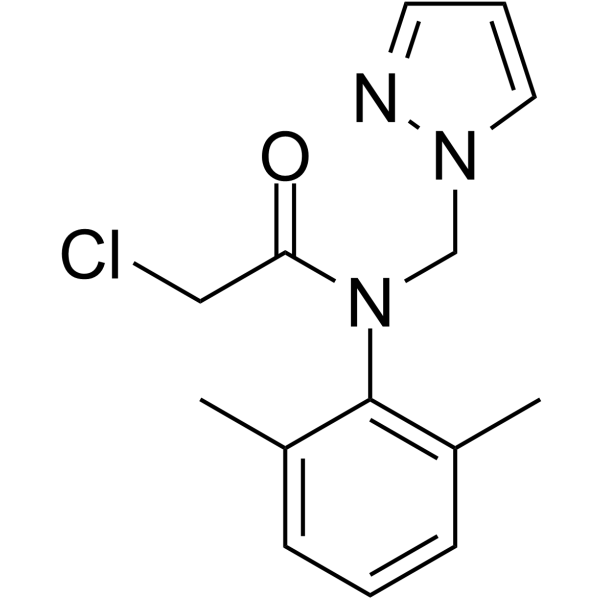
-
- HY-N2341
-
|
9-trans-Hexadecenoic acid; trans-Palmitoleic acid
|
AMPK
PPAR
Glucokinase
|
Metabolic Disease
|
|
Palmitelaidic Acid (9-trans-Hexadecenoic acid) is the trans isomer of palmitoleic acid. Palmitoleic acid is one of the most abundant fatty acids in serum and tissue.
|
-

-
- HY-D0220
-
|
Toluidine Blue O
|
Fluorescent Dye
|
Cancer
|
|
Toluidine Blue (Toluidine Blue O) is an alkaline quinonimine dye (vivo dye) with high affinity for acidic tissue components, staining nuclei blue and polysaccharides purple. Toluidine Blue shows heterostaining properties for mast cells, mucins and chondrocytes. Toluidine Blue can stain different components of plant tissues and cells in different colours. Toluidine Blue is also used as a diagnostic aid to identify malignant lesions, such as cancer .
|
-

-
- HY-P10110
-
|
|
Autophagy
|
Neurological Disease
|
|
retro-inverso TAT-Beclin 1 D-amino acid is has higher activity and resistance to proteolytic degradation in vivo compared to L-amino acids peptide. TAT-Beclin 1 can induce autophagy in peripheral tissues in adult mice as well as in the central nervous system of neonatal mice .
|
-

-
- HY-W250143
-
|
|
Biochemical Assay Reagents
|
Others
|
|
Toluidine blue (ZnCl2) is a basic thiazine dye commonly used as a biological stain for microscopy. It has a deep bluish-purple color and is commonly used to stain nucleic acids such as DNA and RNA, as well as to stain mast cells, cartilage, and other connective tissues. Toluidine blue (ZnCl2) stains the acidic components of these tissues, such as sulfated or carboxylated mucopolysaccharides. It is frequently used in histology, cytology, and pathology applications to aid in the diagnosis of various diseases and conditions. The dye is usually applied to tissue sections prior to microscopic examination and can be differentiated using an acidic alcohol solution. Toluidine blue (ZnCl2) is a relatively simple and inexpensive stain with good reproducibility, making it a popular choice for many laboratories.
|
-
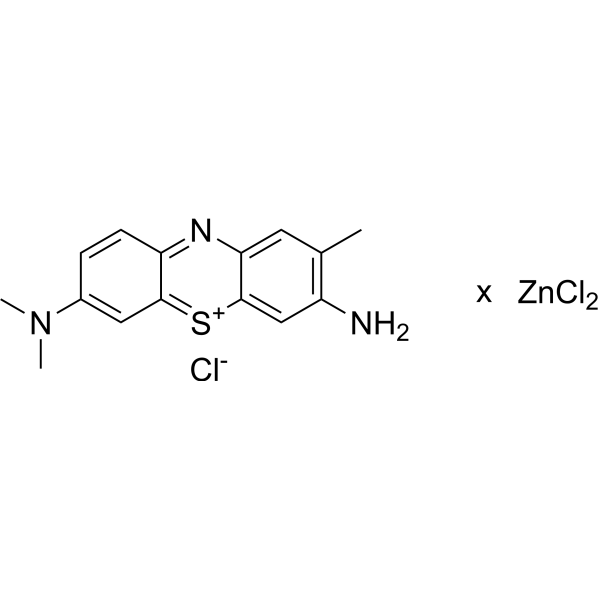
-
- HY-W004260S1
-
|
Icosanoic acid-d39
|
Isotope-Labeled Compounds
Endogenous Metabolite
|
Others
|
|
Arachidic acid-d39 is the deuterium labeled Arachidic acid. Arachidonic acid (Icosanoic acid), a long-chain fatty acid, is present in all mammalian cells, typically esterified to membrane phospholipids, and is one of the most abundant polyunsaturated fatty acids present in human tissue[1][2].
|
-

-
- HY-W004260S
-
|
Icosanoic acid-d2
|
Isotope-Labeled Compounds
Endogenous Metabolite
|
Others
|
|
Arachidic acid-d2 is the deuterium labeled Arachidic acid. Arachidonic acid (Icosanoic acid), a long-chain fatty acid, is present in all mammalian cells, typically esterified to membrane phospholipids, and is one of the most abundant polyunsaturated fatty acids present in human tissue[1][2].
|
-

-
- HY-W004260S2
-
|
Icosanoic acid-d3
|
Isotope-Labeled Compounds
Endogenous Metabolite
|
Others
|
|
Arachidic acid-d3) is the deuterium labeled Arachidic acid. Arachidonic acid (Icosanoic acid), a long-chain fatty acid, is present in all mammalian cells, typically esterified to membrane phospholipids, and is one of the most abundant polyunsaturated fatty acids present in human tissue[1][2].
|
-

-
- HY-W004260S3
-
|
Icosanoic acid-13C
|
Isotope-Labeled Compounds
Endogenous Metabolite
|
Cancer
|
|
Arachidic acid- 13C is the 13C labeled Arachidic acid. Arachidonic acid (Icosanoic acid), a long-chain fatty acid, is present in all mammalian cells, typically esterified to membrane phospholipids, and is one of the most abundant polyunsaturated fatty acids present in human tissue[1][2][3].
|
-
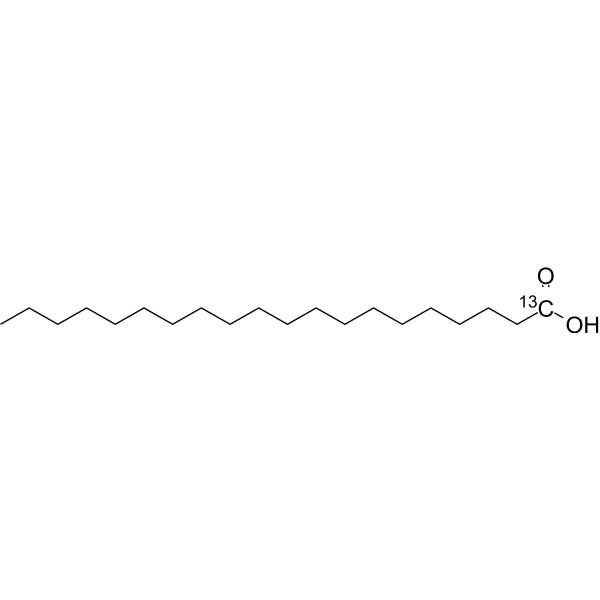
-
- HY-W004260S4
-
|
Icosanoic acid-d4
|
Isotope-Labeled Compounds
Endogenous Metabolite
|
|
|
Arachidic acid-d4 is the deuterium labeled Arachidic acid. Arachidonic acid (Icosanoic acid), a long-chain fatty acid, is present in all mammalian cells, typically esterified to membrane phospholipids, and is one of the most abundant polyunsaturated fatty acids present in human tissue[1][2].
|
-

-
- HY-Y0469
-
|
|
|
|
|
1-Aminohydantoin hydrochloride is a major metabolite of nitrofurantoin in animal tissues and can be used as a standard for the determination of residues of veterinary agents in meat, milk et.al. 1-Aminohydantoin hydrochloride covalently binds to tissue proteins and is released from the tissues under slightly acidic conditions and derivatized with 2-nitrobenzaldehyde to form nitrophenyl derivatives of AHD before detection .
|
-
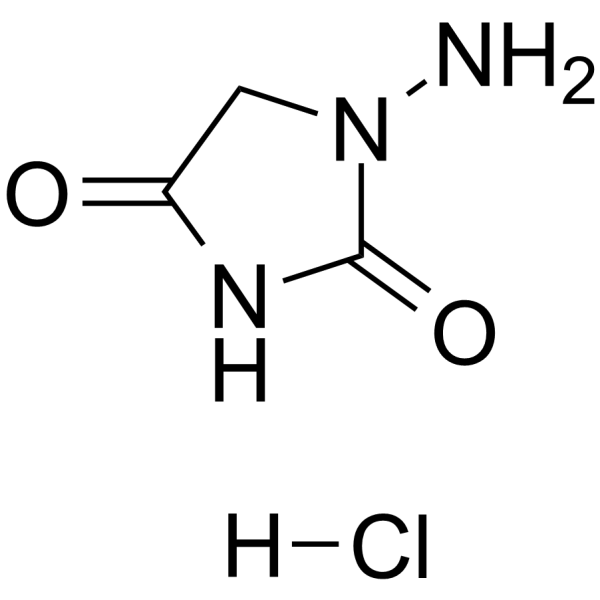
-
- HY-103311
-
|
Ammoniated ruthenium oxychloride
|
Calcium Channel
|
Cardiovascular Disease
|
|
Ruthenium red (Ammoniated ruthenium oxychloride) is a polycationic dye widely used for electron microscopy (EM) of cells, tissues and vegetative bacteria. Ruthenium red strongly reacts with phospholipids and fatty acids and binds to acidic mucopolysaccharides. Ruthenium red is a L-type calcium current (ICa) blocker .
|
-
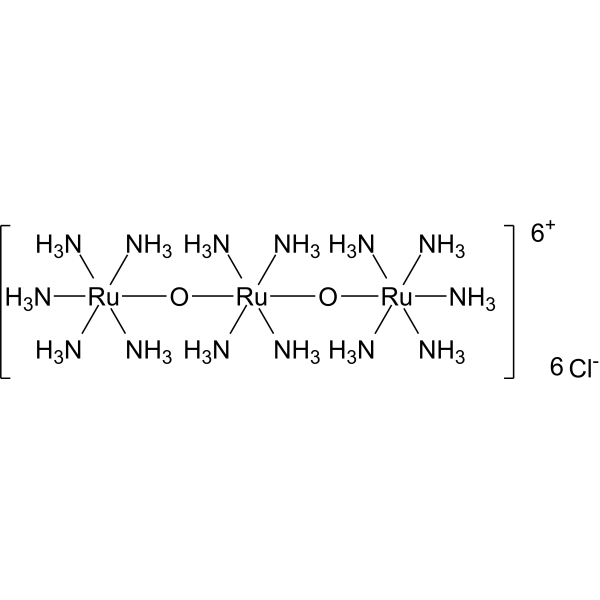
-
- HY-W004260S5
-
|
|
Endogenous Metabolite
|
Others
|
|
Arachidic acid-d4-1 is the deuterium labeled Arachidic acid[1]. Arachidonic acid (Icosanoic acid), a long-chain fatty acid, is present in all mammalian cells, typically esterified to membrane phospholipids, and is one of the most abundant polyunsaturated fatty acids present in human tissue[2][3].
|
-
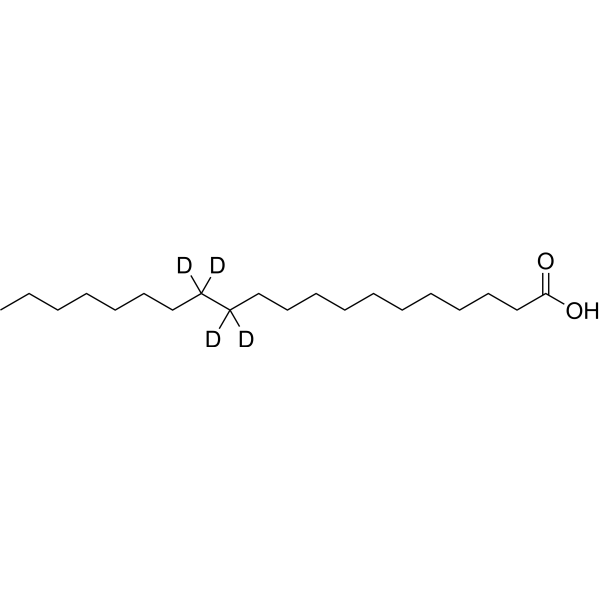
-
- HY-N2341S
-
|
|
AMPK
PPAR
Glucokinase
|
Metabolic Disease
|
|
Palmitelaidic acid-d13 is the deuterium labeled Palmitelaidic Acid. Palmitelaidic Acid (9-trans-Hexadecenoic acid) is the trans isomer of palmitoleic acid. Palmitoleic acid is one of the most abundant fatty acids in serum and tissue.
|
-
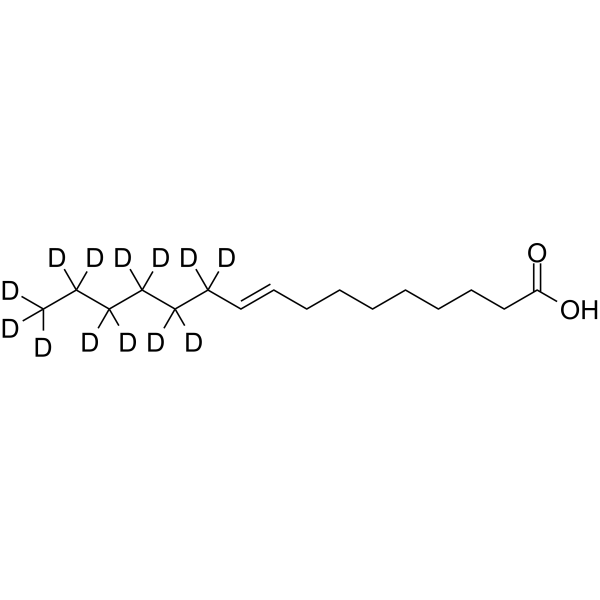
-
- HY-W004260
-
|
Eicosanoic acid
|
Endogenous Metabolite
|
Others
|
|
Arachidonic acid (Icosanoic acid), an orally active long-chain fatty acid, is present in all mammalian cells, typically esterified to membrane phospholipids, and is one of the most abundant polyunsaturated fatty acids present in human tissue. Moreover, Arachidonic acid is an important mediator of inflammation .
|
-
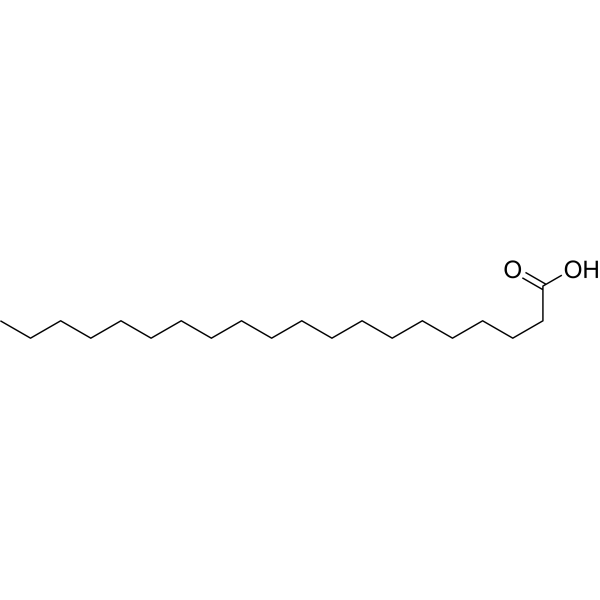
-
- HY-126042
-
|
(±)-Lisophylline
|
Others
|
Metabolic Disease
Inflammation/Immunology
|
|
(±)-Lisofylline ((±)-Lisophylline) is the racemate of Lisofylline. Lisofylline inhibits the generation of phosphatidic acid and free fatty acids. Lisofylline also blocks the release of pro-inflammatory cytokines in oxidative tissue injury, in response to cancer chemotherapy and in experimental sepsis. Lisofylline can be used for Type 1 diabetes research .
|
-
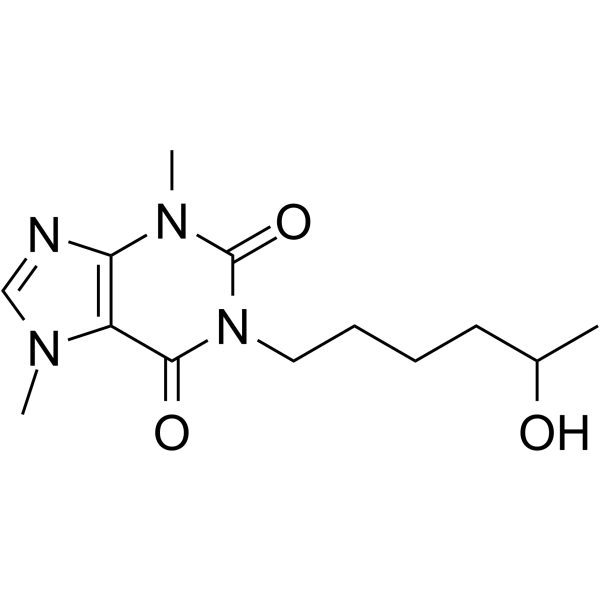
-
- HY-W004260R
-
|
Eicosanoic acid (Standard)
|
Endogenous Metabolite
|
Others
|
|
Arachidic acid (Standard) is the analytical standard of Arachidic acid. This product is intended for research and analytical applications. Arachidonic acid (Icosanoic acid), a long-chain fatty acid, is present in all mammalian cells, typically esterified to membrane phospholipids, and is one of the most abundant polyunsaturated fatty acids present in human tissue .
|
-

-
- HY-D0220A
-
|
Toluidine Blue O (purity 36%)
|
Fluorescent Dye
|
Others
|
|
Toluidine Blue (Toluidine Blue O) purity 36% is an alkaline quinonimine dye (vivo dye) with high affinity for acidic tissue components, staining nuclei blue and polysaccharides purple. Toluidine Blue purity 36% shows heterostaining properties for mast cells, mucins and chondrocytes. Toluidine Blue purity 36% can stain different components of plant tissues and cells in different colours. Toluidine Blue purity 36% is also used as a diagnostic aid to identify malignant lesions, such as cancer .
|
-
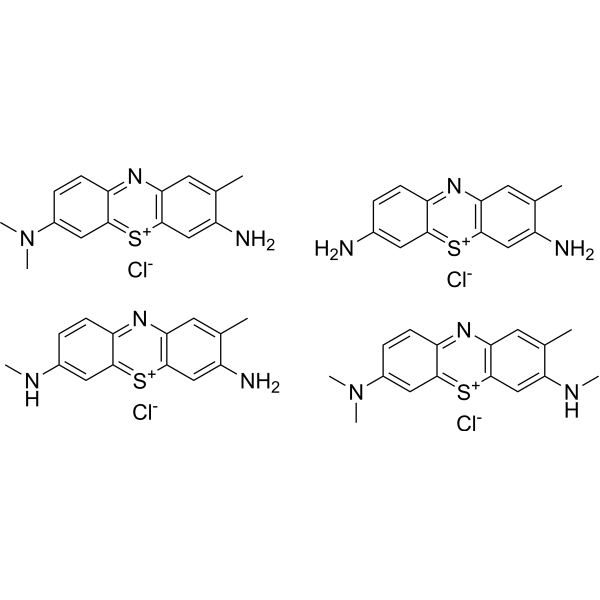
-
- HY-113130
-
-
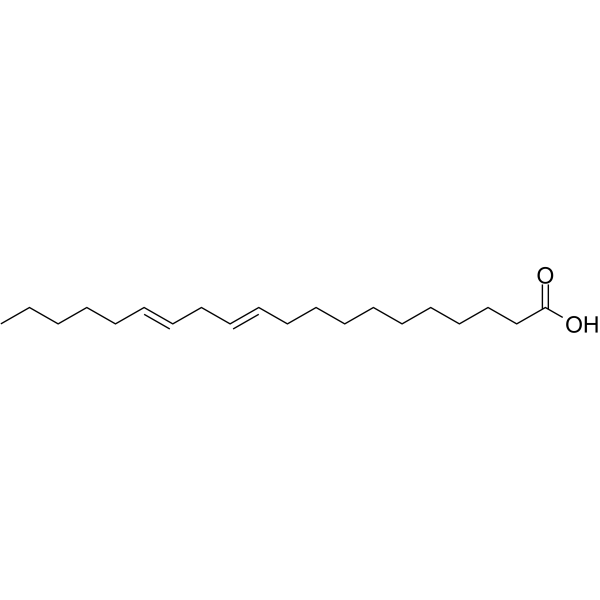
-
- HY-163146
-
|
|
Fluorescent Dye
|
Cancer
|
|
TME-HYM (PH Probe) is a novel fluorescent probe based on acidic tumor microenvironment (TME) activation and organic anion transporting polypeptide (OATPs, overexpressed on cancer cells), and can be selective uptaken. TME-HYM (PH Probe) can selectively lit up cancer cells and tumor tissues, offering dual tumor selectivity for precise visualization of tumor mass .
|
-
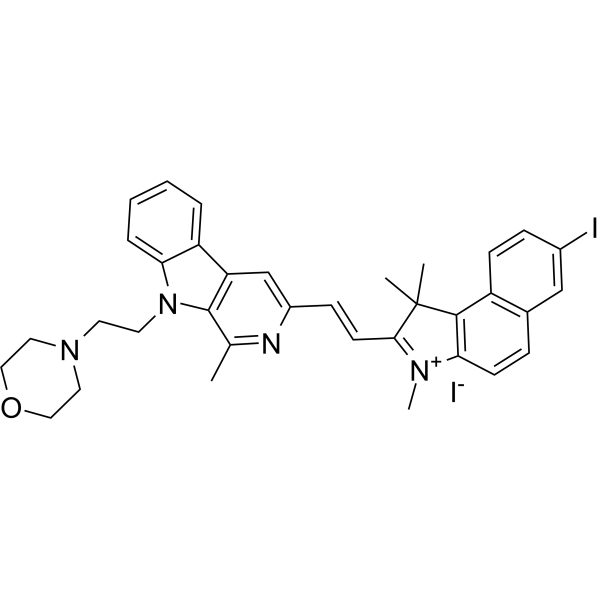
-
- HY-W017443
-
|
|
Endogenous Metabolite
|
Metabolic Disease
|
|
L-Asparagine monohydrate ((-)-Asparagine monohydrate) is a non-essential amino acid that is involved in the metabolic control of cell functions in nerve and brain tissue.
|
-
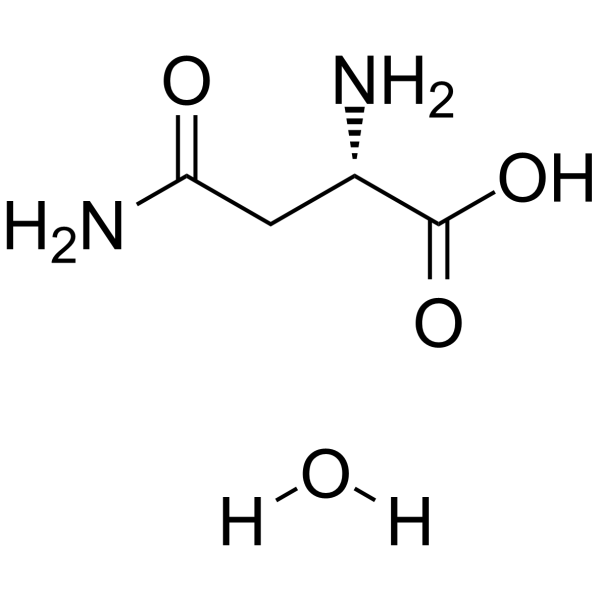
-
- HY-133971
-
|
5α,6α-Epoxycholesterol
|
Biochemical Assay Reagents
|
Others
|
|
Cholesterol-5α,6α-epoxide is an epoxide derivative of cholesterol formed by the enzymatic oxidation of cholesterol in the liver and other tissues. Cholesterol-5α,6α-epoxide has unique chemical properties that make it an important intermediate in the biosynthesis of bile acids, which play a key role in the digestion and absorption of dietary fats. It also has a potential physiological role in regulating cholesterol metabolism and transport, although its biological function is not fully understood.
|
-
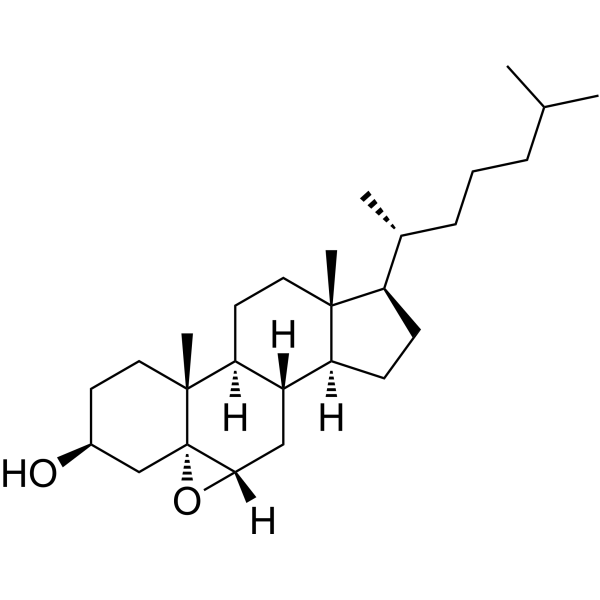
-
- HY-101559
-
|
CXA-10
|
Others
|
Inflammation/Immunology
|
|
10-Nitrooleic acid (CXA-10), a nitro fatty acid, has potential effects in disease states in which oxidative stress, inflammation, fibrosis, and/or direct tissue toxicity play significant roles .
|
-
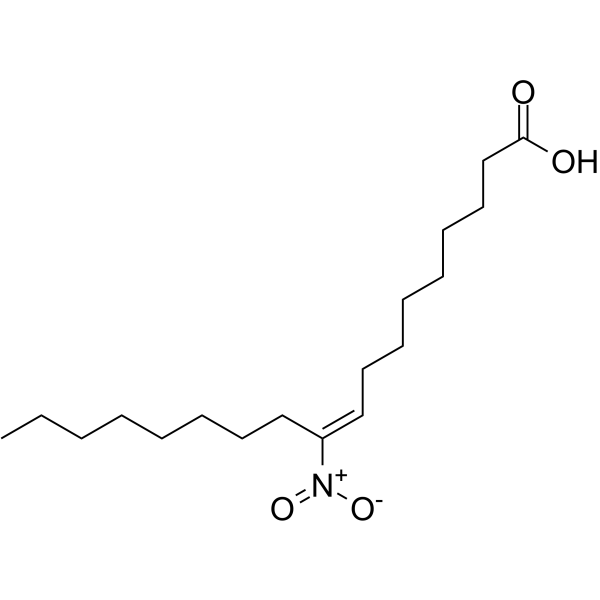
-
- HY-D1840
-
|
|
Biochemical Assay Reagents
|
Others
|
|
Tyramide Amplification Buffer is a ready-to-use buffer primarily intended for immunostaining of cells and tissues by the technique of tyramide signal amplification (TSA). TSA Technology is based on a tyrosinase labeling system that reacts a tyrosine-labeled antibody with a fluorescently labeled tyramide using peroxidase to form a highly amplified fluorescent signal. For example, horseradish peroxidase (HRP) can catalyze the reaction of tyrosine and hydrogen peroxide under milder conditions to generate epoxy groups. Epoxy groups promote the binding of tyramide to adjacent amino acids to form fluorescently labeled products .
|
-
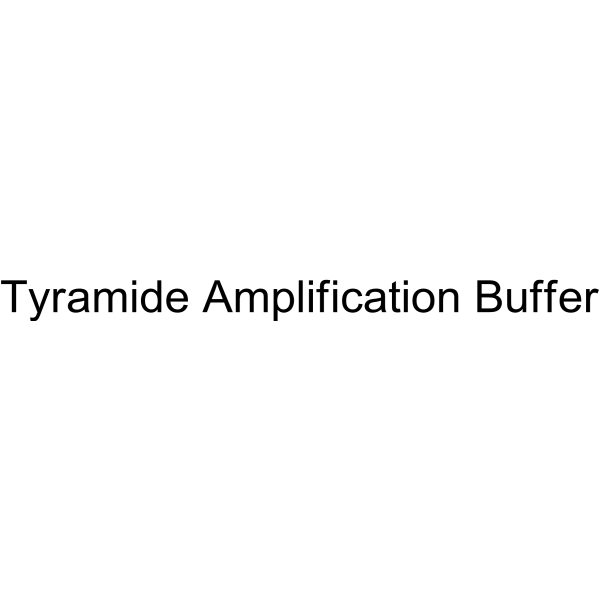
-
- HY-120973
-
|
|
Biochemical Assay Reagents
|
Others
|
|
(R)-Butaprost (free acid). Butaprost is a structural analog of prostaglandin E2 (PGE2) with good selectivity for the EP2 receptor subtype. Butaprost is frequently used pharmacologically to define the expression profile of EP receptors in various human and animal tissues and cells. Gardiner caused serious confusion about the structure of butaprost in 1986 when he reported that the epimer of butaprost showing this selective activity was the C-16 (R)-epimer ( See reference 2 and notes). To increase the binding affinity of (R)-butaprost to prostaglandin receptors, we removed the methyl ester of (R)-butaprost and recreated the native C-1 carboxylic acid. Prostaglandin free acids typically bind their cognate receptors with 10 to 100-fold higher affinity than the corresponding ester derivatives. The pharmacology of (R)-butaprost has not been carefully studied, but it is generally considered to be the less active C-16 epimer. (Note: In the 1986 Gardiner paper in the British Journal of Pharmacology, butaprost appears on page 46 under the designation TR 4979. The structure drawn is incorrect because the authors use and refer to the more active C - The 16 epimer, which is actually 16(S). The structure on page 46 shows the structure as 16(R). It was not until the late 1990s that careful studies in the United States and Japan correctly determined the actual structure of C-16 The type is 16(S) in a compound called butaprost.)
|
-

| Cat. No. |
Product Name |
Type |
-
- HY-103311
-
|
Ammoniated ruthenium oxychloride
|
Dyes
|
|
Ruthenium red (Ammoniated ruthenium oxychloride) is a polycationic dye widely used for electron microscopy (EM) of cells, tissues and vegetative bacteria. Ruthenium red strongly reacts with phospholipids and fatty acids and binds to acidic mucopolysaccharides. Ruthenium red is a L-type calcium current (ICa) blocker .
|
-
- HY-D0220A
-
|
Toluidine Blue O (purity 36%)
|
Dyes
|
|
Toluidine Blue (Toluidine Blue O) purity 36% is an alkaline quinonimine dye (vivo dye) with high affinity for acidic tissue components, staining nuclei blue and polysaccharides purple. Toluidine Blue purity 36% shows heterostaining properties for mast cells, mucins and chondrocytes. Toluidine Blue purity 36% can stain different components of plant tissues and cells in different colours. Toluidine Blue purity 36% is also used as a diagnostic aid to identify malignant lesions, such as cancer .
|
-
- HY-D1840
-
|
|
Dyes
|
|
Tyramide Amplification Buffer is a ready-to-use buffer primarily intended for immunostaining of cells and tissues by the technique of tyramide signal amplification (TSA). TSA Technology is based on a tyrosinase labeling system that reacts a tyrosine-labeled antibody with a fluorescently labeled tyramide using peroxidase to form a highly amplified fluorescent signal. For example, horseradish peroxidase (HRP) can catalyze the reaction of tyrosine and hydrogen peroxide under milder conditions to generate epoxy groups. Epoxy groups promote the binding of tyramide to adjacent amino acids to form fluorescently labeled products .
|
-
- HY-W250143
-
|
|
Dyes
|
|
Toluidine blue (ZnCl2) is a basic thiazine dye commonly used as a biological stain for microscopy. It has a deep bluish-purple color and is commonly used to stain nucleic acids such as DNA and RNA, as well as to stain mast cells, cartilage, and other connective tissues. Toluidine blue (ZnCl2) stains the acidic components of these tissues, such as sulfated or carboxylated mucopolysaccharides. It is frequently used in histology, cytology, and pathology applications to aid in the diagnosis of various diseases and conditions. The dye is usually applied to tissue sections prior to microscopic examination and can be differentiated using an acidic alcohol solution. Toluidine blue (ZnCl2) is a relatively simple and inexpensive stain with good reproducibility, making it a popular choice for many laboratories.
|
| Cat. No. |
Product Name |
Type |
-
- HY-W133898
-
|
|
Biochemical Assay Reagents
|
|
Tryptone is a common component of biological media. Tryptone is the polypeptone derived from the protein hydrolysis of animal tissue (pancreas) and digested by pancreatic enzymes. The main components of Tryptone were the digestion of casein by trypsin, including the peptones, small peptides and amino acids generated from the hydrolysis of casein. Tryptone provides nutrients needed for bacterial growth, especially nitrogen and carbon sources.
|
-
- HY-133971
-
|
5α,6α-Epoxycholesterol
|
Biochemical Assay Reagents
|
|
Cholesterol-5α,6α-epoxide is an epoxide derivative of cholesterol formed by the enzymatic oxidation of cholesterol in the liver and other tissues. Cholesterol-5α,6α-epoxide has unique chemical properties that make it an important intermediate in the biosynthesis of bile acids, which play a key role in the digestion and absorption of dietary fats. It also has a potential physiological role in regulating cholesterol metabolism and transport, although its biological function is not fully understood.
|
-
- HY-120973
-
|
|
Biochemical Assay Reagents
|
|
(R)-Butaprost (free acid). Butaprost is a structural analog of prostaglandin E2 (PGE2) with good selectivity for the EP2 receptor subtype. Butaprost is frequently used pharmacologically to define the expression profile of EP receptors in various human and animal tissues and cells. Gardiner caused serious confusion about the structure of butaprost in 1986 when he reported that the epimer of butaprost showing this selective activity was the C-16 (R)-epimer ( See reference 2 and notes). To increase the binding affinity of (R)-butaprost to prostaglandin receptors, we removed the methyl ester of (R)-butaprost and recreated the native C-1 carboxylic acid. Prostaglandin free acids typically bind their cognate receptors with 10 to 100-fold higher affinity than the corresponding ester derivatives. The pharmacology of (R)-butaprost has not been carefully studied, but it is generally considered to be the less active C-16 epimer. (Note: In the 1986 Gardiner paper in the British Journal of Pharmacology, butaprost appears on page 46 under the designation TR 4979. The structure drawn is incorrect because the authors use and refer to the more active C - The 16 epimer, which is actually 16(S). The structure on page 46 shows the structure as 16(R). It was not until the late 1990s that careful studies in the United States and Japan correctly determined the actual structure of C-16 The type is 16(S) in a compound called butaprost.)
|
| Cat. No. |
Product Name |
Target |
Research Area |
-
- HY-P10110
-
|
|
Autophagy
|
Neurological Disease
|
|
retro-inverso TAT-Beclin 1 D-amino acid is has higher activity and resistance to proteolytic degradation in vivo compared to L-amino acids peptide. TAT-Beclin 1 can induce autophagy in peripheral tissues in adult mice as well as in the central nervous system of neonatal mice .
|
| Cat. No. |
Product Name |
Category |
Target |
Chemical Structure |
| Cat. No. |
Compare |
Product Name |
Species |
Source |
Compare Products
|
| Products |
|
| Cat. No. |
|
| Species |
|
| Source |
|
| Tag |
|
| Accession |
|
| Gene ID |
|
| Molecular Weight |
|
| Purity |
|
| Endotoxin Level |
|
| Biological Activity |
|
| Appearance |
|
| Formulation |
|
| Storage & Stability |
|
| Shipping |
|
| Free Sample |
Yes
No
|
| Size |
* This product has been "discontinued".
Optimized version of product available:
|
| Cat. No. |
Product Name |
Chemical Structure |
-
- HY-W004260S1
-
|
|
|
Arachidic acid-d39 is the deuterium labeled Arachidic acid. Arachidonic acid (Icosanoic acid), a long-chain fatty acid, is present in all mammalian cells, typically esterified to membrane phospholipids, and is one of the most abundant polyunsaturated fatty acids present in human tissue[1][2].
|
-

-
- HY-W004260S4
-
|
|
|
Arachidic acid-d4 is the deuterium labeled Arachidic acid. Arachidonic acid (Icosanoic acid), a long-chain fatty acid, is present in all mammalian cells, typically esterified to membrane phospholipids, and is one of the most abundant polyunsaturated fatty acids present in human tissue[1][2].
|
-

-
- HY-W004260S
-
|
|
|
Arachidic acid-d2 is the deuterium labeled Arachidic acid. Arachidonic acid (Icosanoic acid), a long-chain fatty acid, is present in all mammalian cells, typically esterified to membrane phospholipids, and is one of the most abundant polyunsaturated fatty acids present in human tissue[1][2].
|
-

-
- HY-W004260S2
-
|
|
|
Arachidic acid-d3) is the deuterium labeled Arachidic acid. Arachidonic acid (Icosanoic acid), a long-chain fatty acid, is present in all mammalian cells, typically esterified to membrane phospholipids, and is one of the most abundant polyunsaturated fatty acids present in human tissue[1][2].
|
-

-
- HY-W004260S3
-
|
|
|
Arachidic acid- 13C is the 13C labeled Arachidic acid. Arachidonic acid (Icosanoic acid), a long-chain fatty acid, is present in all mammalian cells, typically esterified to membrane phospholipids, and is one of the most abundant polyunsaturated fatty acids present in human tissue[1][2][3].
|
-

-
- HY-W004260S5
-
|
|
|
Arachidic acid-d4-1 is the deuterium labeled Arachidic acid[1]. Arachidonic acid (Icosanoic acid), a long-chain fatty acid, is present in all mammalian cells, typically esterified to membrane phospholipids, and is one of the most abundant polyunsaturated fatty acids present in human tissue[2][3].
|
-

-
- HY-N2341S
-
|
|
|
Palmitelaidic acid-d13 is the deuterium labeled Palmitelaidic Acid. Palmitelaidic Acid (9-trans-Hexadecenoic acid) is the trans isomer of palmitoleic acid. Palmitoleic acid is one of the most abundant fatty acids in serum and tissue.
|
-

Your information is safe with us. * Required Fields.
Inquiry Information
- Product Name:
- Cat. No.:
- Quantity:
- MCE Japan Authorized Agent:

































